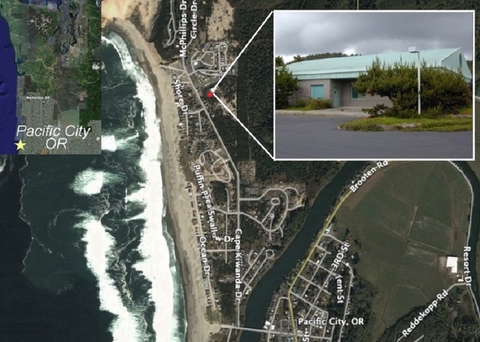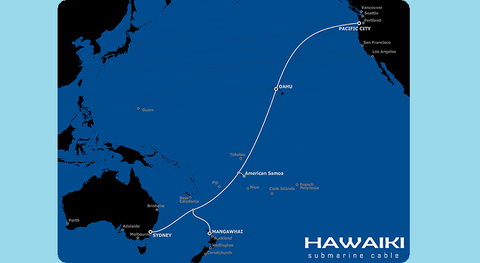Wave Broadband has completed the build-out of its 97-mile Nestucca Route backhaul network, deepening its presence in a desirable section of Oregon’s data center and submarine cable segments.
By completing this build, Wave will link the undersea cable landing station in Pacific City, Oregon, to the company’s data center ring in Hillsboro, Oregon, which currently connects six nearby data centers. Businesses connected to the fiber ring or the landing station can now leverage Wave’s 7,500 miles of fiber network to transmit data along the West Coast in Washington, Oregon, and California.
RELATED: Wave acquires Cascadelink, bolsters residential, business Gbps customer reach
Matt Updenkelder, director of commercial business development at Wave Broadband, told FierceTelecom there’s an opportunity to provide an alternative route for service providers and others needing access to the West Coast.
“We now have two redundant backhaul routes from Pacific City to Hillsboro and those tie into our Hillsboro data center ring,” Updenkelder said. “We have a mock-up of the Ashburn, Virginia, model where we have a high-capacity ribbon cable around six of the key data centers in Hillsboro and we’re providing dark fiber cross connects between the data centers for a reduced dark fiber fee.”
New cable models
This new network is not based on a build-it-and-they-will-come network proposition. Already, the Seattle-based National Science Foundation’s Ocean Observatories Initiative (OOI) uses Wave’s fiber infrastructure to transmit high volumes of data and real-time command-and-control capabilities over cabled instruments.
In 2005, Tillamook Lightwave (TLW) awarded CoastCom, the predecessor company before being purchased by Wave, a 5-year contract to act as their network operator with the responsibility for all aspects of managing and deploying TLW assets.

These instruments are usedin scientific ocean monitoring, including areas such as earthquake detection and underwater volcanism, by researchers and educators across the globe. Wave also counts several West Coast government, finance, and hospitality-based businesses as initial customers.
“The University of Washington was awarded the West Coast contract for the NSF’s OOI and we were awarded the terrestrial backhaul piece for the University of Washington,” Updenkelder said. “That was our interlude into the submarine cable business and because we had one route on an aging cable, we decided this was a good business model for us to try to push forward.”
Wave gained access to this fiber network route when it purchased Oregon-based CoastCom in 2016. Besides serving local businesses and residents, CoastCom’s fiber network had a direct connection to a submarine cable landing station in Pacific City, Oregon, complementing Wave’s recently announced Transpacific Hub data center venture with Centeris.
As part of Wave Broadband, the CoastCom team continues to operate and market the submarine cable-related side of the business as another product offering. Updenkelder said that customer interest in the route is growing from a host of other submarine cable providers, content providers and carriers overall.
“On the submarine cable side, it’s 100% the cable itself,” Updenkelder said. “There’s been a paradigm shift maybe over the past 5-7 years where the traditional cables were owned, run and managed by the telcos. Now with the amount of the traffic on the internet in eyeball space and cloud space, you’re seeing the cloud providers are spearheading these cables.”
Updenkelder added that the advent of cloud providers building their own cables “paved the way for us to get into the industry.”
Asia-Pac connection
Being on the West Coast, Wave is in a prime position to serve a host of domestic and Asia-Pacific providers that need access to major data centers and other points in the United States. This network enables other carriers and related customers to get Wave’s fiber network to directly link with Asia through the Pacific City landing station.

Markets in China, Taiwan, South Korea, and Japan connect on the New Cross Pacific (NCP) Cable, while Hawaii, American Samoa, New Zealand, and Australia will be added when the Hawaiki Cable is scheduled to land at the station in October. The service provider currently serves as the terrestrial backhaul provider for the NCP coming in from Asia and the Hawaiiki Cable.
“New Cross Pacific (NCP) did their own landing station and Hawaiki is in our landing station for Tillamook Lightwave,” Updenkelder said.
